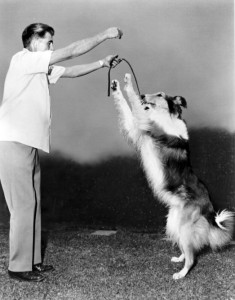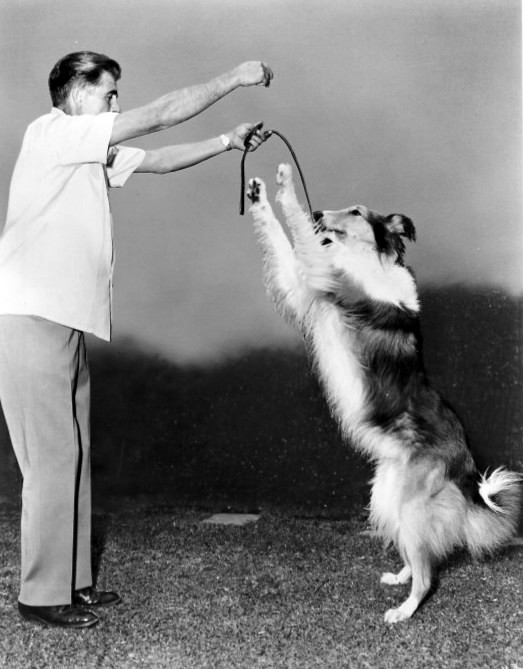Frustrating, isn’t it? You want your dog to sit, and you’ve tried having a little talk with dog to make him or her understand, but it doesn’t seem to be helping.
Here are some of the magical commands you could be giving, and how to make them work.

Sit
This is, by far, the easiest command to give your dog. The “sit” command can be used to get dog to sit down or lay down. Hold a treat close to your dog’s nose. Now, move your hand up, and let dog’s head follow the treat. This will get your dog to lower. Once he’s in the sitting position, reinforce this command by saying “sit.” Then, give the treat and share affection to reinforce again. You can repeat this process multiple times with the treat. Eventually, you will want to replace the treat with affection. Repeat this sequence a few times every day until your dog masters it. Ask your dog to sit before mealtime, and when leaving for walks to prevent rushing the door, and in other situations where you want him to be calm, not rush people, or not be too excited and lose control.
Stay
The stay command is one that requires a prerequisite: sit. If your dog struggles with the sit command, you can’t use “stay.” Ask your dog to sit first. Then, use the back of your open palm to give the command “stay.” Take a few steps back and reward with a treat if dog stays. Increase the number of steps gradually while reinforcing the stay command. Reward your dog for staying even if it’s for a few seconds. You’re trying to teach dog self-control, which is difficult for a dog. Don’t be too discouraged if your pup has a hard time with this one. Call in a trainer and hire dog training in NJ if you need help. Since this is an exercise in self-control for your dog, you need patience. Self-control is something that young dogs, especially, have a very hard time with. Even older dogs can have problems controlling themselves.
Come
The “come” command keeps your dog out of trouble and brings him back to you if you do happen to drop the lease accidentally. First, put the leash on dog. Then, get on his level and say “come.” Gently pull the leash as you say this. When he finally obeys the command, you can give him a treat as a reward. Follow up with affection. Once he’s got it down pat, you can remove the leash and repeat the command in a safe area where there’s no real danger. After you’ve spent time with this command, introduce distractions. Distractions are important with a command like this because dogs are often “in the moment” kind of creatures. Meaning, if they get away from you, there are many things that will attract their attention. You want them to ignore all of those other things and obey only you – and you above other people or things, including other dog.
Down
Down can be one of the more difficult things for you to train your dog to do. If your dog is a “jumper,” then you’re in for a long battle. Why? Because the down command is one that puts your dog into a submissive state, and dogs are animals that want to be alpha. This is particularly true of aggressive dogs or dogs that are naturally inclined to be alpha dogs. Get yourself your dog’s favorite treat. Hold it in your closed fist. Hold your hand to the dog’s snout. He will smell it. When he does, move your hand to the floor so that he will follow. Slide your hand along the ground in front of him to encourage a lying down posture. Use the command “down” once dog is down on the floor (and share affection as a follow up). If dog tries to sit up or lunges at your hand, use the “no” command and take your hand away. Do not push your dog to a down position. While this can sometimes get the message into your dog’s head, it doesn’t actually teach dog anything. Laura Howard has been working with other peoples dogs as a trainer for several years, though has worked with her own dogs from a very young age.

